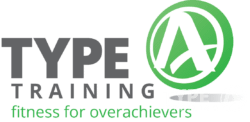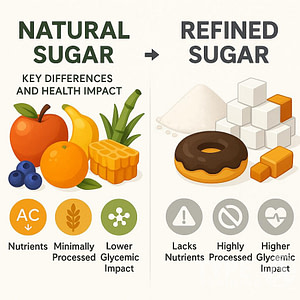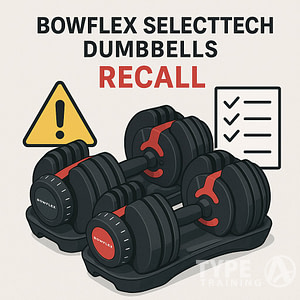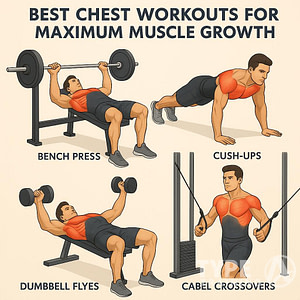The back squat is a fundamental exercise that tests lower body strength and power. Many fitness enthusiasts and athletes aim to improve their squat numbers, but determining an appropriate goal can be challenging.
Your target back squat weight should typically be 1.5 to 2 times your body weight for men and 1.0 to 1.5 times for women. This depends on your experience level and training goals.
Factors like age, body composition, and training history influence your squat potential. Beginners may start with bodyweight squats or light loads, gradually increasing weight as they develop proper form and strength.
Popular posts:
Advanced lifters often push beyond these general guidelines, but progress tends to slow as you approach your genetic potential.
Key Takeaways
- Your back squat goal should be based on your body weight, gender, and experience level
- Proper form and gradual progression are crucial for safe and effective squat training
- Balance squat training with other exercises for comprehensive fitness development
Understanding Squat Mechanics
Squat mechanics involve proper body positioning and movement patterns to maximize strength and minimize injury risk. Mastering these fundamentals is crucial for all squat variations.
Proper Form and Technique
Start with feet shoulder-width apart, toes slightly angled out. Keep your chest up and core tight.
Initiate the movement by hinging at the hips and bending your knees. Lower yourself as if sitting back into a chair.
Maintain a neutral spine throughout the movement. Your knees should track in line with your toes.
Descend until your thighs are parallel to the ground or lower, depending on your flexibility and goals.
Drive through your heels to stand back up, pushing your hips forward and squeezing your glutes at the top. Breathe in as you lower and exhale as you rise.
Differences Between Back, Front, and Overhead Squats
The barbell back squat places the weight across your upper back. This allows for heavier loads and targets the posterior chain more. It requires good shoulder mobility to maintain proper bar position.
Front squats position the bar on your front deltoids and clavicles. This variation is more quad-dominant and requires excellent core strength and thoracic mobility. It’s easier on the lower back compared to back squats.
Overhead squats hold the bar above your head throughout the movement. This challenges your balance, flexibility, and shoulder stability. It’s an advanced variation that builds overall strength and coordination.
Each squat type has unique benefits and challenges. Experimenting with different variations can improve your overall squatting ability and target specific muscle groups.
Importance of Squat Strength
Squat strength is a key indicator of overall fitness and lower body power. It plays a crucial role in developing functional strength and muscle mass.
Benefits of Strong Quads and Glutes
Strong quads and glutes from squatting enhance your athletic performance. You’ll experience improved speed, agility, and explosive power in sports and daily activities.
Squats target multiple muscle groups simultaneously, making them highly efficient for building lower body strength. Your quads and glutes become more defined and powerful.
Regular squatting increases bone density, reducing the risk of osteoporosis as you age. It also improves your balance and stability, making you less prone to falls.
Stronger leg muscles boost your metabolism, helping you burn more calories throughout the day. This can aid in weight management and body composition goals.
Role in Overall Fitness and Lower Body Development
Squat strength is a reliable measure of your overall fitness level. As your squat numbers improve, you’ll likely see gains in other areas of physical performance.
Squats are fundamental for lower body development. They build muscle mass in your legs, creating a strong foundation for other exercises and activities.
Your core strength improves significantly with regular squatting. This translates to better posture and reduced risk of lower back pain.
Squats enhance your body awareness and proprioception. You’ll move more efficiently in everyday tasks and sports activities.
By incorporating squats into your routine, you develop a more balanced physique. This symmetry can prevent muscle imbalances and reduce injury risk.
Assessing Your Squat Strength
Evaluating your squat performance involves comparing it to established standards and recognizing key indicators of strength levels. This allows you to gauge your current abilities and set realistic goals for improvement.
Strength Level Indicators
Your squat strength can be categorized into different levels based on your performance. Beginners typically squat less than their body weight, while intermediate lifters can squat 1-1.5 times their body weight.
Advanced lifters often squat 1.5-2 times their body weight. Elite performers may squat more than 2 times their body weight.
Your one-rep max (1RM) is a crucial indicator of your squat strength. This is the maximum weight you can lift for a single repetition with proper form.
To estimate your 1RM, you can use calculators or perform a test. Start with a weight you can lift for 3-5 reps and gradually increase until you reach your maximum single rep.
Squat Strength Standards
Squat strength standards provide benchmarks for different fitness levels. These standards vary based on factors like gender, age, and body weight.
For adult men, a novice might squat 135-185 lbs, while an intermediate lifter could squat 225-275 lbs. Advanced male lifters often squat 315-405 lbs or more.
For adult women, novice standards range from 85-115 lbs, intermediates from 135-185 lbs, and advanced lifters from 225-275 lbs or higher.
Regularly testing your squat strength helps track progress. Aim to reassess every 4-6 weeks, adjusting your training program accordingly to continue improving.
Setting Your Squat Goals
Establishing realistic squat goals tailored to your experience level is crucial for steady progress. Proper goal-setting keeps you motivated and helps prevent injuries from overreaching.
Realistic Targets for Beginners to Advanced Lifters
Novice lifters should aim to squat their body weight within 3-6 months of consistent training. For intermediate lifters, a goal of 1.5 times body weight is achievable within 1-2 years.
Advanced male lifters often target 2-2.5 times their body weight, while female lifters may aim for 1.5-2 times their body weight. These goals vary based on individual factors like age, body composition, and training history.
Remember, progress slows as you advance. Set small, incremental goals to maintain motivation. Celebrate each milestone, whether it’s adding 5 pounds or perfecting your form.
Using a Strength Level Calculator
Strength level calculators offer personalized squat targets based on your stats. Input your gender, age, weight, and current lift numbers to receive tailored goals.
These tools compare your performance to others in similar categories, providing benchmarks for novice, intermediate, and advanced levels. They help you track progress and set realistic short-term goals.
Use calculators as guides, not strict rules. Your personal journey may differ from averages. Adjust goals based on your training consistency, recovery ability, and overall progress.
Squat Training Programs
Effective squat programs focus on progressive overload and structured routines tailored to your experience level. These key elements help maximize strength gains and improve your squat performance over time.
From Novice to Advanced: Structuring Your Routine
As a beginner, start with a simple 3×5 squat program. Perform three sets of five repetitions, two to three times per week. This allows for adequate recovery between sessions.
For intermediate lifters, consider a 5×5 program. Five sets of five reps provide increased volume to stimulate further strength gains. Adjust frequency to 2-3 times weekly based on recovery needs.
Advanced lifters benefit from more varied rep ranges and intensities. Try a program that includes heavy triples, moderate fives, and higher-rep sets of 8-10. This approach targets different aspects of strength and muscle development.
Incorporating Progressive Overload
Progressive overload is crucial for continuous improvement in your squat. Start by adding 2.5-5 pounds to the bar each session as a beginner.
As you advance, progress becomes slower. Implement microloading with smaller increments like 1-2 pounds. This allows for steady progress without stalling.
Periodically vary rep ranges and volume to prevent plateaus. For example, alternate between weeks of heavy low-rep sets and lighter high-rep sets.
Nutrition and Recovery for Squat Improvement
Proper nutrition and adequate rest are crucial for maximizing your squat performance and muscle gains. These factors work together to support your body’s ability to build strength and recover from intense workouts.
The Role of Nutrition in Building Muscle
To improve your squat, focus on consuming enough protein. Aim for 1.6-2.2 grams of protein per kilogram of body weight daily. Include lean meats, fish, eggs, and plant-based sources like beans and lentils in your diet.
Carbohydrates are essential for energy during workouts. Choose complex carbs like whole grains, sweet potatoes, and oats to fuel your squats.
Maintain a slight calorie surplus of 300-500 calories above maintenance to support muscle growth. Track your food intake using a nutrition app to ensure you’re meeting your goals.
Don’t forget healthy fats from sources like avocados, nuts, and olive oil. They play a role in hormone production, which is crucial for muscle building.
Importance of Rest and Recovery
Allow at least 48 hours between squat sessions to give your muscles time to repair and grow stronger. Aim for 7-9 hours of sleep per night to support muscle recovery and hormone production.
Incorporate active recovery days with light activities like walking or swimming. These help improve blood flow and reduce muscle soreness.
Consider using foam rolling or massage to alleviate muscle tightness. This can help maintain flexibility and reduce the risk of injury during squats.
Stay hydrated by drinking water throughout the day. Proper hydration aids in nutrient transport and muscle recovery.
Listen to your body and take extra rest days if needed. Pushing through excessive fatigue can lead to overtraining and hinder your squat progress.
Squat Equipment and Accessories
Proper equipment and accessories can significantly enhance your squat performance and safety. The right tools allow you to push your limits while minimizing injury risk.
Choosing the Right Squat Rack
A sturdy squat rack is essential for heavy lifting. Look for a rack with adjustable safety bars to catch the weight if you fail a rep. Power racks offer the most stability and versatility for squats.
Consider the rack’s height and width to ensure it fits your space and body type. Commercial-grade steel construction provides durability for long-term use.
Ensure the rack has weight plate storage pins for convenience. Some racks include pull-up bars or attachment points for bands, adding value to your setup.
The Use of Weightlifting Belts and Other Gear
A weightlifting belt can provide core support during heavy squats. It helps you maintain proper form and potentially lift more weight. Choose a belt made of thick, stiff leather for maximum support.
Proper footwear is crucial. Opt for flat-soled
Knee sleeves offer compression and warmth to your knee joints, potentially reducing pain and improving performance. Wrist wraps can provide extra support for your wrists when holding the bar.
Consider using resistance bands for accommodating resistance or assistance in your squat training. These can help you break through plateaus and improve explosiveness.
Understanding Different Squat Variations
Squat variations offer diverse benefits and target muscles in unique ways. Each type serves specific purposes in strength training and fitness routines.
Goblet Squats vs. Barbell Back Squats
Goblet squats involve holding a weight close to your chest, typically a kettlebell or dumbbell. This variation encourages proper form and engages your core more intensely.
Barbell back squats, on the other hand, allow you to lift heavier weights. You place a barbell across your upper back, targeting your quads, glutes, and hamstrings more effectively.
Goblet squats are excellent for beginners or as a warm-up exercise. They help improve balance and posture.
Barbell back squats are ideal for building overall lower body strength and muscle mass. They’re a staple in powerlifting and bodybuilding routines.
Bodyweight Squats and their Role in Training
Bodyweight squats form the foundation of squat training. They require no equipment and can be performed anywhere. This variation helps you master proper form and technique before adding weights.
Bodyweight squats are crucial for beginners and serve as an effective warm-up exercise.
They improve mobility, flexibility, and cardiovascular fitness when performed in high repetitions.
You can incorporate them into circuit training or use them as an active recovery exercise between weightlifting sets.
Measuring Progress and Performance
Tracking your squat performance and understanding weight ratios are crucial for assessing your strength gains. These metrics provide valuable insights into your progress and help set realistic goals.
Tracking Your Squat Workouts
Keep a detailed log of your squat workouts. Record the weight lifted, number of sets and repetitions, and rest periods between sets. Note any variations in form or technique.
Use a notebook or smartphone app to maintain consistency in your tracking. This allows you to spot trends and identify areas for improvement.
Set specific, measurable goals for your squat performance. Aim to increase weight or repetitions gradually over time. Celebrate small victories as you work towards larger milestones.
Regularly test your one-rep max (1RM) to gauge overall strength gains. Perform this test every 4-6 weeks under proper supervision for safety.
Understanding Weight Ratios
Weight ratios compare your squat strength to your body weight. They provide a standardized measure of relative strength across different body sizes.
A common benchmark is squatting 1.5 times your body weight for a single repetition. This ratio indicates intermediate to advanced strength levels for most lifters.
Calculate your weight ratio by dividing your squat 1RM by your body weight. For example, a 180-pound person squatting 270 pounds has a ratio of 1.5.
Use these ratios as guidelines, not strict rules. Individual factors like body composition, limb length, and training history can influence your ideal ratio.
Aim to improve your weight ratio gradually over time. Focus on proper form and technique to maximize strength gains while minimizing injury risk.
Recognizing and Celebrating Achievements
Tracking your squat progress and celebrating milestones are key motivators in strength training. Acknowledging your accomplishments reinforces dedication and fuels further growth.
Squat Milestones and Records
Strength levels for squats vary based on factors like gender, body weight, and training experience. For men, squatting 1.5 times your body weight is considered intermediate, while 2 times is advanced.
Women typically aim for 1.2 times body weight as intermediate and 1.5 times as advanced.
The current squat world record stands at an astounding 1,306 pounds (592 kg), set by Nathan Baptist in 2021. This feat showcases the incredible potential of human strength.
For beginners, squatting your own body weight is a significant milestone. As you progress, aim for multiples of your body weight to gauge improvement.
Setting and Achieving Personal Bests
Your one-rep max (1RM) is a key indicator of squat strength. Calculate it by lifting the heaviest weight possible for a single repetition with proper form. Use this number to set realistic goals and track progress over time.
Start by aiming to increase your 1RM by 5-10% every 3-6 months. This gradual approach helps prevent injury and ensures steady progress.
Keep a training log to record your lifts and celebrate each new personal best.
Remember, progress isn’t always linear. Some weeks you might feel stronger, while others may be challenging. Stay consistent and focus on long-term improvement rather than day-to-day fluctuations.
Frequently Asked Questions
Back squats are a fundamental strength exercise, but proper technique and weight selection are crucial. The following questions address common concerns about back squat standards and progression.
What are appropriate beginner weights for back squat?
For beginners, start with just the barbell (45 lbs/20 kg) to learn proper form. Gradually add weight in 5-10 lb increments as you become comfortable with the movement. Aim to squat your body weight within 3-6 months of consistent training.
Are there different back squat standards for males and females?
Yes, there are different standards due to physiological differences. On average, males tend to squat about 125-200% of their body weight, while females typically squat 75-150% of their body weight when trained.
What factors influence how much one should back squat relative to body weight?
Body composition, limb length, and training experience all affect squat performance. Those with more muscle mass and shorter limbs often squat more relative to their body weight. Age and injury history also play roles in determining appropriate squat weights.
What are considered standard back squat weights for experienced lifters?
Experienced male lifters often squat 1.5-2.5 times their body weight. For females, 1.0-2.0 times body weight is common. Elite powerlifters may squat even more, sometimes exceeding 3 times their body weight.
How should one progress in weight when focusing on back squats for reps?
Increase weight by 2.5-5 lbs per week when you can complete all planned sets and reps with good form. If you struggle, maintain the current weight until you can perform all reps cleanly before progressing.
What benchmarks indicate a good back squat weight for different experience levels?
Novice lifters should aim for body weight squats. Intermediate lifters often reach 1.5 times body weight.
Advanced lifters typically squat 2 times body weight or more. These benchmarks vary based on factors like age, gender, and training goals.


















